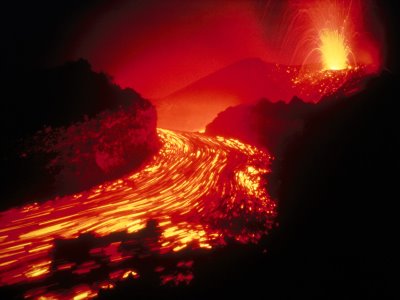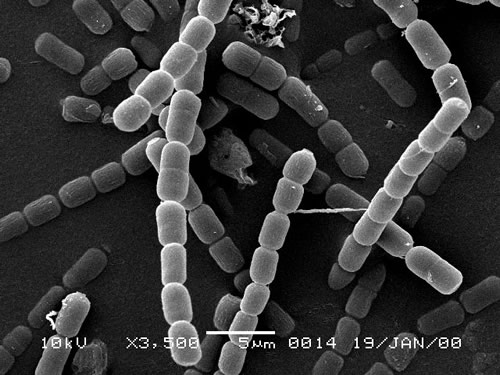4.5 Billion Years Ago
 Scientists
believe that the Earth was formed 4.5 billion years ago and that for the
first one billion years there was no life on Earth. It was a lifeless
planet just like many others in the universe. Earth was a toxic mass of
sterile rubble. Meteorites are raining down, and clouds of lethal gases
are smothering everything in the atmosphere.
Scientists
believe that the Earth was formed 4.5 billion years ago and that for the
first one billion years there was no life on Earth. It was a lifeless
planet just like many others in the universe. Earth was a toxic mass of
sterile rubble. Meteorites are raining down, and clouds of lethal gases
are smothering everything in the atmosphere.
 Speculation:
[Some scientist believe that a wondering planet named Thea(Theia) collided
with Earth smashing the two planets, the planets broke apart and then
fuzzed together into one, creating a new world, our world. Remains of
this collision form our moon.]
Speculation:
[Some scientist believe that a wondering planet named Thea(Theia) collided
with Earth smashing the two planets, the planets broke apart and then
fuzzed together into one, creating a new world, our world. Remains of
this collision form our moon.]
When Earth's crust was newly formed, volcanic eruptions occurred on a colossal scale. These eruptions actually helped create suitable conditions for life, because they gave off steam, which eventually condensed to form the oceans. They also produced minerals that early bacteria could use as sources of energy.
3.5 billion years ago the first signs of life appear. In the early days of Earth the Earth contained many poisonous gases. But it was in these hostile conditions that life on Earth began.
That is not a simple explanation how life on Earth began, it is believed that it was the result of a chemical reaction. As chemicals reacted with one another, organic molecules where made. Among the new molecules were amino acids the building blocks of life, from which all living things stem.
The first living things on Earth were simple small organisms such as bacteria. They lived in the oceans. Algae thrived in shallow waters spread across the ocean floor in vast colonies. In their daily lives they made a waste product that they pumped into to the oceans. The waste product one oxygen gas. Oxygen bubble up from the algae in the oceans and escaped into the sky. The atmosphere's oxygen level began to creep up to 21 percent, today's level . With an atmosphere rich in oxygen air could be breathed in- it was time for new forms of life to appear.
The first of these "aerobic organisms were single-celled aquatic microbes, larger than bacteria and much more complex. The are called protists, they teem in freshwater and the sea today. But their place at the top was not destined to last, because over a million years ago plants and animals began to evolve.

The long filaments shown here are strands of Anabaena, a present-day cyanobacterium, or blue green alga. Anabaena lives in shallow water and on damp ground. Its way of life is not very different from that of the earliest photosynthetic bacteria.